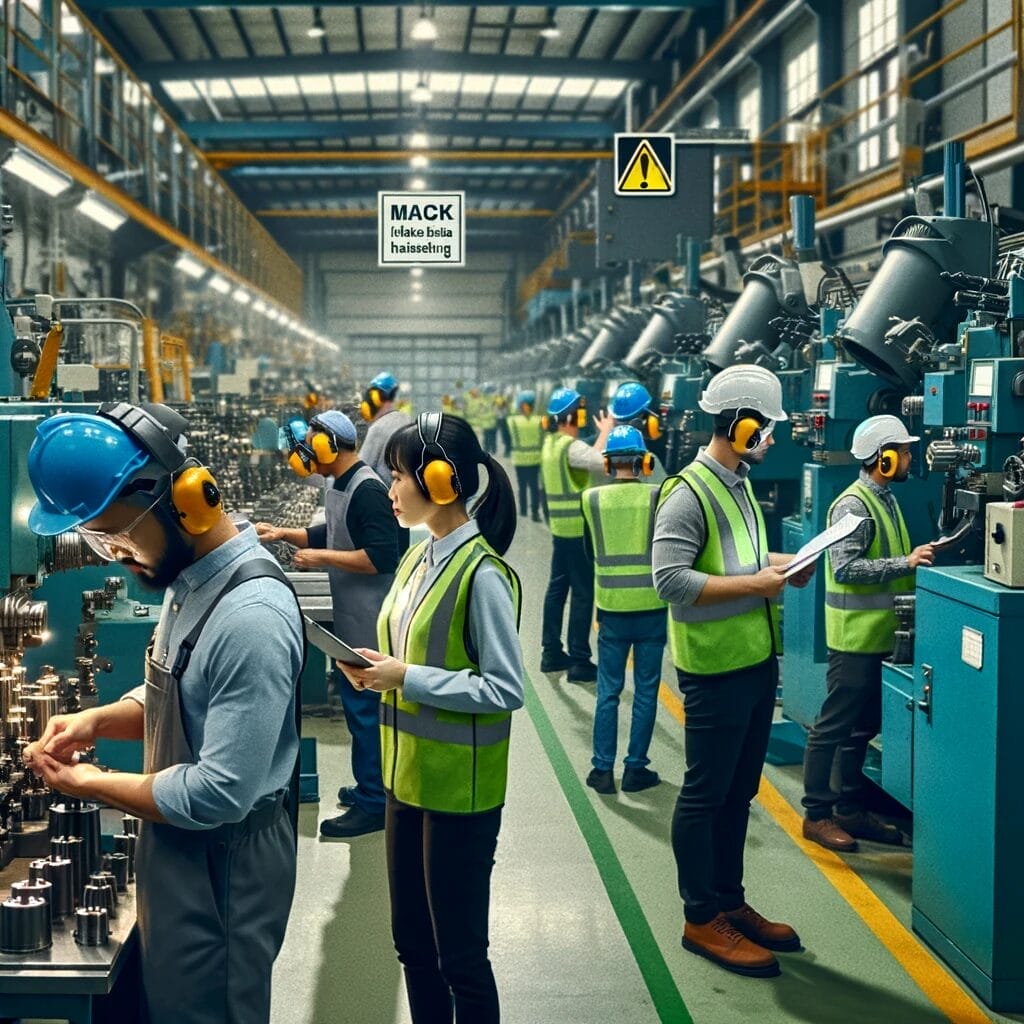In the realms of occupational health and safety, the issue of workplace noise pollution has emerged as a significant concern. This article aims to delineate the standards for managing and reducing workplace noise pollution, with a particular emphasis on Australian regulations and practices. The gravity of this subject cannot be overstated, as excessive noise in the workplace not only impairs the quality of working life but also poses serious risks to hearing and overall health.
Introduction to Workplace Noise Pollution
Workplace noise pollution is defined as unwanted or harmful sound in a work environment. It can originate from various sources, including machinery, tools, and even human activities. The World Health Organization has identified noise as an underestimated threat that can cause a multitude of short and long-term health problems, such as stress, poor concentration, productivity loss, communication difficulties, and in extreme cases, permanent hearing loss.
Workplace Noise in the Australian Context
In Australia, workplace noise standards are governed by regulations set forth by Safe Work Australia, a statutory body established to develop national policy on work health and safety (WHS) and workers’ compensation. The Model Work Health and Safety Regulations, which provide a framework that can be adopted by all jurisdictions, play a pivotal role in setting out specific duties for managing noise.
Workplace Noise Regulatory Framework
The cornerstone of the Australian regulatory approach to workplace noise is the concept of the ‘standard noise level’, expressed in terms of an eight-hour equivalent continuous A-weighted sound pressure level of 85 decibels (dB(A)). This threshold is aligned with international standards and is predicated on extensive research indicating that exposure to noise at or above this level can lead to hearing damage.
Risk Management Approach
Central to Australian workplace noise standards is a risk management approach, which requires employers to identify, assess, and control noise risks. This process begins with a thorough assessment of noise levels using sound level meters and dosimeters, followed by the evaluation of these levels against the standard noise level. Should the noise exceed 85 dB(A), it becomes incumbent upon the employer to implement control measures.
Hierarchy of Control Measures
The hierarchy of control measures is a systematic approach used to minimise or eliminate exposure to noise. It prioritises control methods based on their efficacy and reliability. The hierarchy is as follows:
- Elimination: Removing the source of noise, where feasible.
- Substitution: Replacing noisy machinery or processes with quieter alternatives.
- Isolation: Separating the noise source from the workforce by creating physical barriers or distance, or by enclosing the noise source.
- Engineering controls: Modifying machinery or work environments to reduce noise emissions.
- Administrative controls: Implementing safe work practices, such as rotating staff to limit exposure time.
- Personal Protective Equipment (PPE): Utilising hearing protection devices as a last resort when other controls are not feasible or effective.
Workplace Noise Monitoring and Review
Ongoing monitoring and review of noise levels and control measures are imperative. It ensures that the implemented strategies are effective and continue to comply with the prescribed standards. Employers are also required to provide regular training and information to workers about noise hazards and the importance of hearing protection.
Workplace Noise Health Surveillance
In environments where the noise exceeds the standard noise level, employers must provide health surveillance for their workers. This includes regular hearing tests conducted by a qualified audiologist and maintaining health records to track any changes in hearing ability over time.
Documentation and Record Keeping
Maintaining detailed records of noise assessments, control measures, training, and health surveillance is a critical component of compliance with workplace noise standards. These records not only provide evidence of compliance but also serve as an important tool for continual improvement in noise management practices.
Challenges and Future Directions
Despite the robust regulatory framework, challenges persist in ensuring compliance and effectiveness in managing workplace noise. Small and medium enterprises (SMEs) often struggle with resource constraints and may lack the expertise to implement effective noise control measures. Additionally, the dynamic nature of workplaces, particularly in industries like construction and manufacturing, requires adaptive and evolving noise management strategies.
Future directions in managing workplace noise pollution may include greater emphasis on innovative engineering solutions, development of more sophisticated personal hearing protection devices, and leveraging technology for more accurate and real-time noise monitoring.
Conclusion
In conclusion, the management and reduction of workplace noise pollution is a critical aspect of occupational health and safety, particularly in the Australian context. The established standards and regulatory frameworks provide a comprehensive approach to managing this hazard. However, continuous efforts are required to ensure their effective implementation and adaptation to changing workplace environments. It is the collective responsibility of employers, employees, and regulators to uphold these standards, thereby safeguarding the health and well-being of the workforce and contributing to a more productive and harmonious working environment.
If you would like to know more or would like our assistance in the areas mentioned check us out at www.intrinsicsafety.com.au. Alternately, call us on 1300 990 336 or email us at [email protected]



